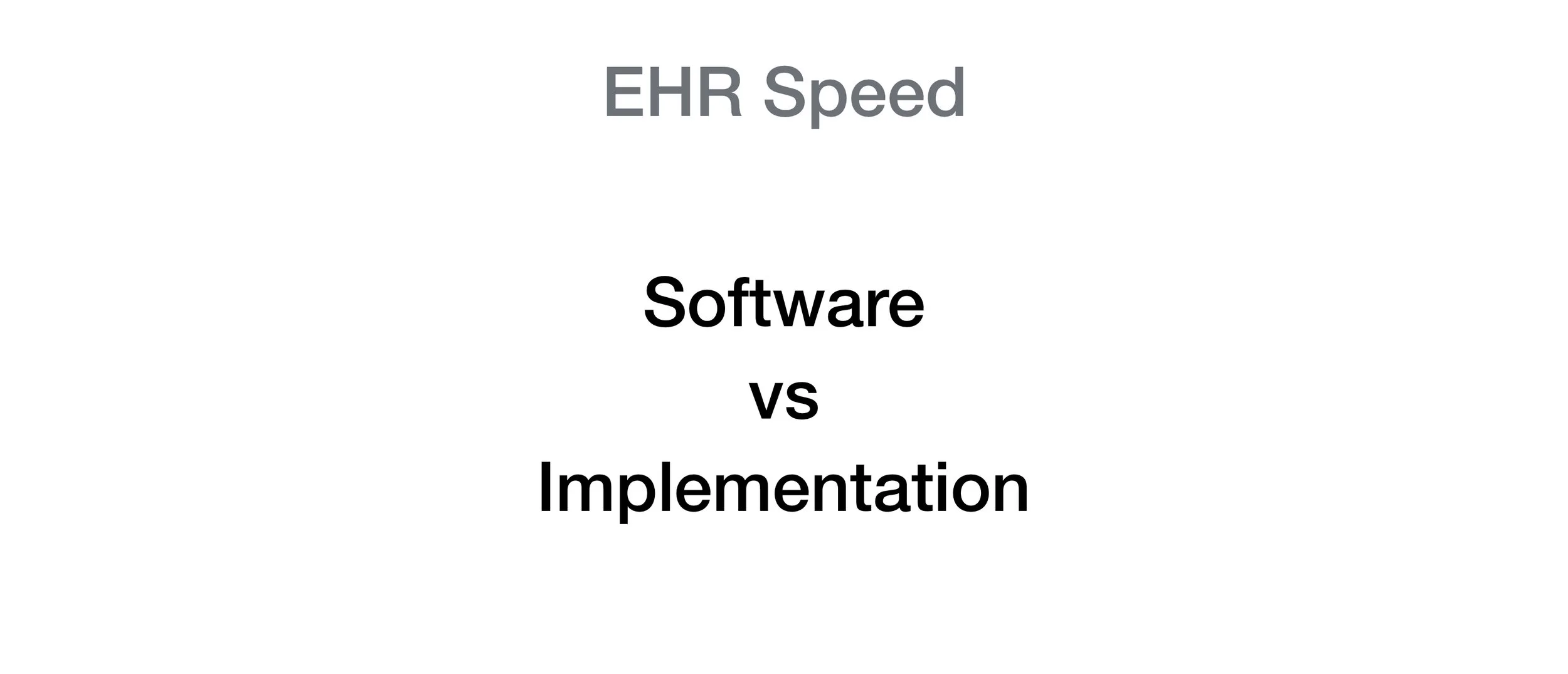Make the EHR immediately useful for users
First build features that are immediately useful to the clinician logged into the EHR. Do not start by promoting delayed benefits for others.
Listen on your podcast app under: Gregory Schmidt, or via YouTube
What makes an electronic health record useful and in turn valuable to a clinician?
The benefits of an EHR can be divided into two categories.
1. Timeframe: immediate vs Delayed
2. For whom: useful for Me vs useful for Others
This can be plotted on a two-by-two grid. The time horizon of the benefits are along the x-axis, and the benefit to others move up the y-axis.
In the bottom-left quadrant is: immediately useful, for me. The opposite extreme is the top-right quadrant: delayed useful, for others.
If the goal is to build an EHR that clinicians will eagerly adopt over their existing paper-based workflows, we must start in the bottom-left quadrant. The first priority must be to build features that are immediately useful to the clinician logged in.
Too often in EHR design and implementation, we try to convince clinicians to use an EHR based on features from the top right quadrant: features that are useful down the road, to other people.
These "other people" may be other clinicians, administrators, or patients. Humans are altruistic and may want to do additional work to help other people, but focusing on these delayed benefits (especially for others) is a tough sell when working with clinicians who are already very busy in their work.
In short: start by focusing on features that are of immediate utility to the person logged in.
Beware of network effects
If installing the EHR for the first time in the organization, the immediate benefits cannot rely upon past usage & network effects. Meaning, an immediate benefit can’t be "to see the patient's history" - as this won't have been entered yet into the system.
In that case, the immediate benefits must be possible without clinicians having previously interacted with the system.
In one hospital I worked in, one of the benefits of the EHR was that it could display the past medical history list. However, in order to display this, the user had to manually enter (via a cumbersome process) the issues. There are obvious collective benefits if everyone entered this information and keep it up to date. However, even after a decade of use, nobody did this. Clinicians are so busy during their day that they avoid taking on extra work, even if they know it will help other people ‘down the road’.
Examples of EHR Value
Let's look at some example of features in each quadrant. The purpose of this matrix isn't to show all the benefits of an EHR, but to demonstrate how this heuristic can evaluate priorities.
The quadrants are ordered based on the most immediate to distant value to the user.
1 - Immediately for Me
Make my data review workflow faster: show me information I would have to hunt for on paper (eg. lab data, imaging data)
eg. data that can be 'auto-dumped' into the EHR from other systems & databases
eg. show me the contact information of people and places I need
eg. provide quick access to the protocols and policies for the group I work in
Make my data capture workflow faster: make it quicker for me to capture my patient assessment and plan on the digital tool, than using paper
eg. use an intelligence workflow to help write me note faster
eg. make its faster to book appointments for a patient than on paper
eg. make it faster for me to order a follow-up home visit for the patient
Provide access clinical support (eg. digital consultation).
eg. or make it easier to access digital patient care resources
Enable me to bill more for my patients, and reduce billing paperwork
Increase the scope of clinical care I can provide
eg. such as through clinical decision support that enables me to provide care I otherwise would be unable to provide using paper-based methods
2 - Delayed for Me
Retrieve information I previously entered about a patient
Avoid overbooking clinics, because I can see when I book a patient how many patients are already scheduled that day
Provide reminders for follow up of patient tests
3 - Immediately for Others
Make it faster for others to find my notes and documentation, and read it
Show others in the clinic what patient I am assessing at that time
Improve the quality of care patients receive
eg. via clinical decision support [immediate benefit for the patient]
eg. reduce my medication order errors [benefit to patient and pharmacy]
eg. make it easier for staff to identify patients who missed clinic
4 - Delayed for Others
Make is easier to produce monthly aggregate quality reports for the organization
Reduce the number of paper charts that need to be filed and retrieved
Low value?
This heuristic doesn’t suggest that features in the top-right quadrant (eg. monthly reporting) are of “low value”.
Instead, this heuristic suggests that feature in the top right are of more “distant value” to the clinician.
To create an EHR tool that clinicians are eager to use over paper, enough compelling immediate benefits to the clinician must be provided. The “Why should I care right now, when I’m very busy” factor must be answered sufficiently.
Offset extra work
If delayed benefits for others are being created that require additional work on the clinician logged in, it is even more critical that more immediate value is created elsewhere in the EHR for the clinician, in order to help offset any additional work.


